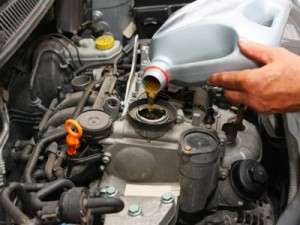
Following on from our recent blog and the theme of buying second hand parts, we’ve decided to put together a check-list of important points to consider when buying a used car.
Checking the Car’s Exterior
Is the car on level ground? This is important in order to allow you to properly check the tyres and any sagging issues there may be.
Inspect the paint job: Make sure you give the cars paint job a thorough going-over. Is Rust spots, dents and scratches are obviously undesirable, and in the case of rust spots could later lead to further issues. Roughness and / or unevenness is a potential indicator of previous use of masking tape or a poorly executed paint job to mask over these blemishes.
Boot-iful: What condition is the boot in? Tread carefully where there is evidence of rust or leakage.
Tyre Check: Tyres on a used vehicle should ideally be matched and evenly worn. Uneven wear can sometimes be attributed to knackered steering and suspension parts. Always worth checking the spare tyre too to ensure that it’s a full spare and not a cheap filler that will serve little to no purpose.
You’ve been framed: This one can sometimes be difficult to spot, but it’s definitely one of the most important things on this checklist as the frame is an integral safety feature. Collisions with faulty frames are particularly dangerous. Look out for clamp marks (i.e. holes or gashes) as a sing of previous damage. Uneven paint jobs (i.e. paint on rear / front headlamps) may also give away a vehicles bumpy history (pun intended). Remember, the gaps between body panels should always be of a consistent width. Door’s, boots or hoods that don’t close and seal properly is strong evidence that the vehicle has been involved in a series accident.
Get down and dirty: If possible try and inspect underneath the car (preferably with it safely raised). Check for black spots or rust on the exhaust system as both indicate leaking. Rub your fingers along the exhaust – if you find greasy grime you’ve got a problem. Get the car running too and check for white vapour. If it’s emitted in warm conditions there’s issues.
Under the Hood
Check for damage: Dents? Rust? Beware! Look for the VIN (vehicle identification number) where the hood joins the fender. No sigh of it? That’s a tell-tale sign that the fender has been replaced.
Hoses and Belts: Important to inspect all hoses and belts for cracks. Radiator hoses should be neither soft nor sticky. Hoses with noticeable swelling where connected to the radiator or engine will need immediate replacing. Might as well check for leaks around hose clamps while you are there.
Engine Check: Here you should have your eyes peeled for evidence of leaks, stains and corrosion. Any evidence of these could be indicative of a gasket leak, which could potentially lead to some very expensive repair costs further down the line. All engine belts should look as good as new. Replacing old belts which can easily snap can prove costly.
Filler Cap: Does the oil filler cap have a foamy residue inside it? If so then you could be forced to deal with a faulty / leaking head gasket. And if that is the case then you might be best of holding onto your money. What sort of condition is the overflow jar in? If you find grimy brown coolant than its possible that it’s never been flushed or, again, there is a leaky gasket at play.
Dipstick: Always worth checking the transmission fluid. Pull the dipstick out and inspect the fluid. It should ideally be pink or light red. If dark (and this is sometimes the case with older cars), it should never look or smell burnt. Best to do this check with the engine on!
Timing Belt: The timing belt is the most important belt in a car’s engine, and therefore the most expensive to replace. CHECK IT!
What about inside the car?
Keeping Up(holstery) Appearances: Pretty obvious, and easy to spot – rips, stains, tears, all undesirable scuff marks.
Air Conditioning: OK, so here in Ireland the air-con might not get nearly as much use as we’d all like, but you should still make sure it’s working perfectly.
Mileage: This one really goes without saying. Check the odometer. And if there is any lingering doubt, make sure to have the seller put in writing a confirmation of the correct mileage.
Lights Out: How does the car function when it’s not moving? Parking sensors etc should always be given the once over.
Test Drive
Brakes: This one is really stating the obvious, but the best way to learn about any car is to take it for a test drive. And one of the most important things to check is the brakes. Press down firmly to decelerate hard in order to accurately judge the state of the brakes (30mph is a good speed to try this test). There should be no vibrations from the brake pedal. Also keep an ear out for noises such as squealing. If the brakes are throbbing you may be looking at having to replace the rotors or pads. There should be no swerving. If it is swerving then the brake calipers or steering components could be worn.







